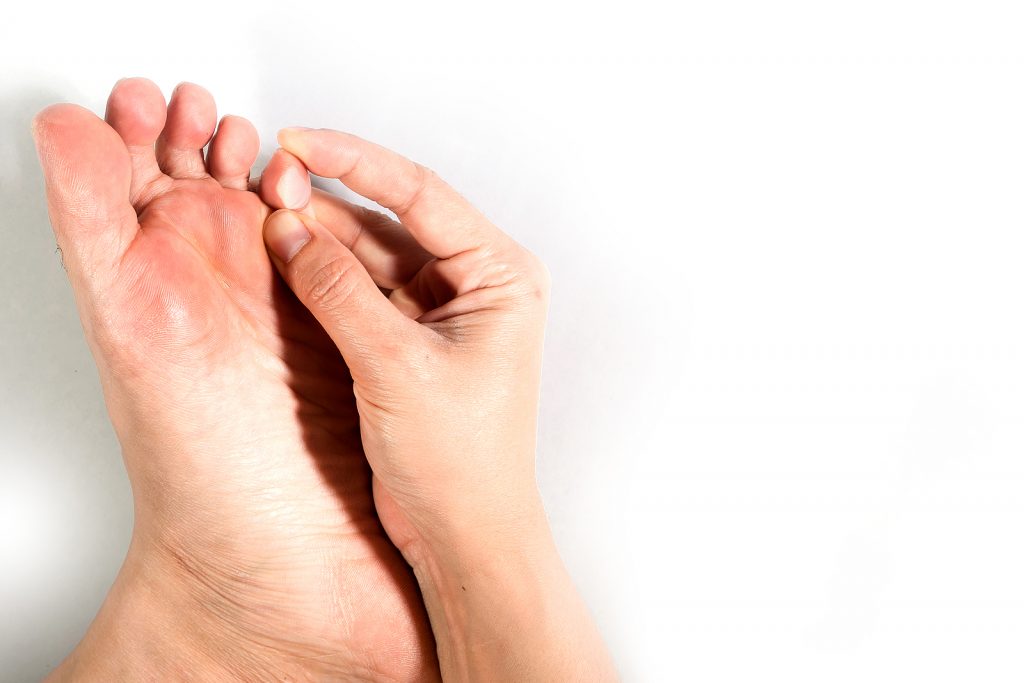
Summer brings heat and moisture, sweaty outdoor sports, and spending time at public pools or humid locker rooms.
Those same conditions can also bring on a case of athlete’s foot, or tinea pedis, a contagious fungal infection of the skin of the feet.
You might first be aware of a problem by the intense itching it causes on the soles of the feet or between the toes. Athlete’s foot can develop into a red scaly rash, often accompanied by peeling or cracking of the skin on the feet. Symptoms can be worse between the toes, where moisture can lurk after bathing or sweating, providing fertile territory for fungus to grow.
Tinea pedis spreads through contact with infected skin or by direct contact with fungi. Thriving in warm, humid conditions, such as showers, locker rooms and swimming pools, the fungus can also be spread through contact with contaminated floors, or with towels, socks or shoes that have been used by an infected person.
Some types of athlete’s foot can erupt in blisters or ulcers that can be mistaken for eczema or dry skin. The fungus can spread to other parts of the body, such as the groin (known as jock itch) or your toenails. It can even spread to the hands if you scratch the infected parts of your feet.
Although athlete’s foot fungus is not dangerous, and can be cleared up with topical treatments, the condition can recur. You can avoid the discomfort and unsightly appearance of athlete’s foot by taking the following precautions:
DO keep your feet dry, especially between your toes. Go barefoot while at home to let your feet air out. After bathing, dry your feet thoroughly with a clean towel, especially between your toes. Use antifungal powder to help dry your feet and keep fungus away.
DO change your socks frequently, as much as two or more times a day if your feet get very sweaty. Choose socks made of cotton or wool, or material made to wick away moisture.
DO alternate pairs of shoes. Rotate between your shoes and sneakers and allow them to dry fully before wearing them again. Choose athletic shoes that are well-ventilated with mesh or small holes to prevent the build-up of moisture.
DON’T wear shoes made of synthetic material, such as nylon or rubber. Avoid shoes that are tight-fitting, especially if you wear them with thick socks.
DON’T go barefoot in public places. Wear waterproof sandals or shoes around public pools, showers and lockers rooms.
DON’T share towels, socks or shoes. The fungus lives on damp surfaces, so sharing increases the risk of spreading a fungal infection.
Your doctor may recommend an over-the-counter antifungal treatment. These treatments come in cream, spray, and powder form and are usually enough to provide relief. But if you experience much discomfort from the itching and flaking skin, ask your doctor to prescribe a more powerful antifungal treatment, either topical (applied to skin) or in pill form.
Continue the treatment for as long as recommended, even after the rash starts to improve so the infection doesn’t come back. See your doctor if the rash doesn’t improve after about two weeks of applying an over-the-counter antifungal product.
If you have diabetes, tell your doctor if you think you have athlete’s foot. Signs of a secondary bacterial infection such as excessive redness, swelling, drainage or fever also warrant medical attention.
WORK CITED
“7 Tips to Prevent Summer Athlete’s Foot.” Foot Care Specialists Blog. https://www.footcarespecialists.com/blog/7-tips-to-prevent-summer-athletes-foot
“Athlete’s Foot: Symptoms and Causes.” Mayo Clinic. Last update Sept. 04, 2019. https://www.mayoclinic.org/diseases-conditions/athletes-foot/symptoms-causes/syc-20353841
“Hygiene-related Diseases: Athlete’s Foot (Tinea Pedis).” Center for Disease Prevention and Control. https://www.cdc.gov/healthywater/hygiene/disease/athletes_foot.html
“Athlete’s Foot (for Teens).” Teens’ Health from Nemours. https://kidshealth.org/en/teens/athletes-foot.html
